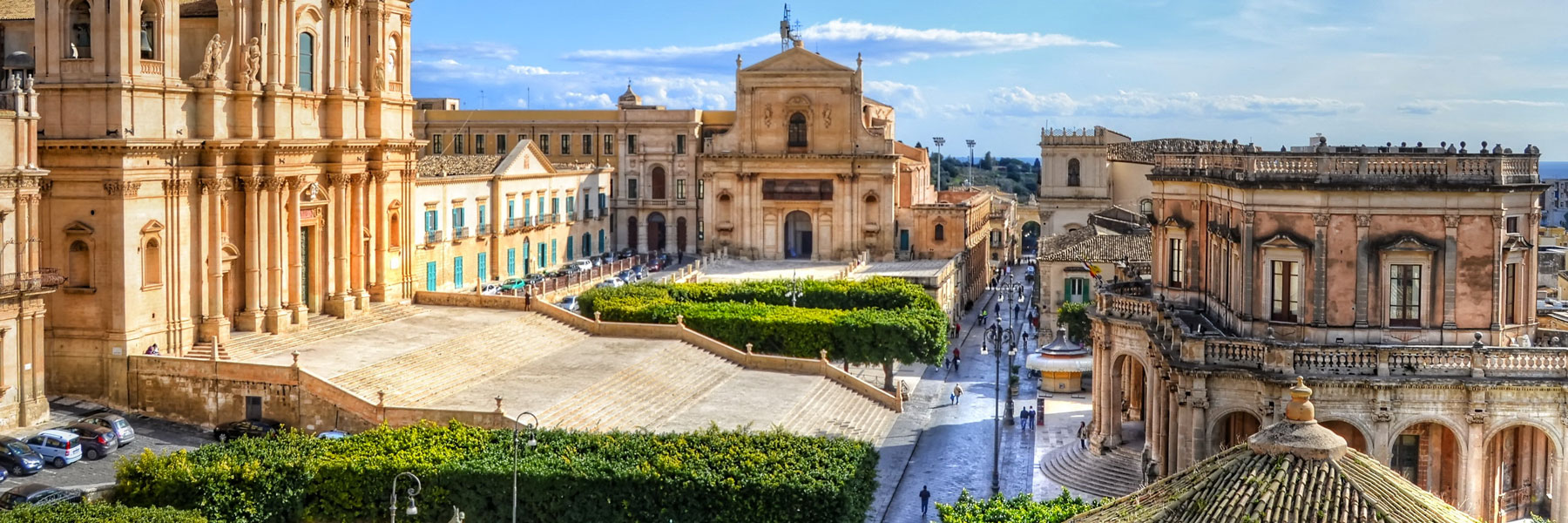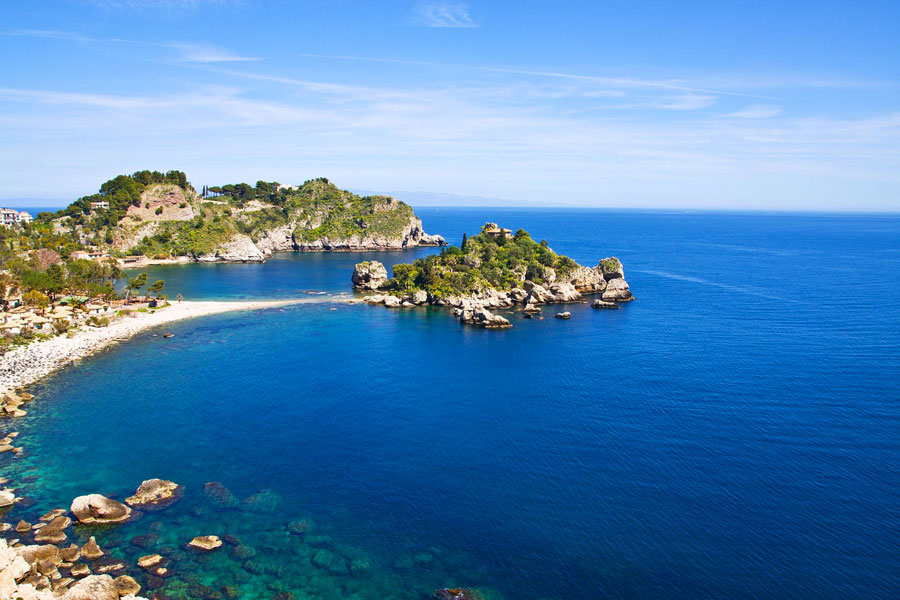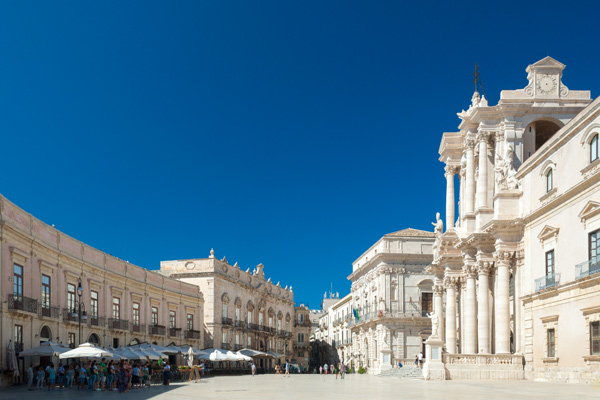Sicilian Baroque
Imposing and striking elegant, Sicilian Baroque overflowed in Sicily from 1620 to 1760.
Sicilian Baroque is a style rich of curved lines and striking stage effects, great for the tendency to exaggerate. It is peculiar of all the main towns and cities of Eastern Sicily due to the fact that they had to be rebuilt altogether after the violent earthquake that destroyed them in 1693.
Sicilian Baroque represents a period rich of changes and features the opulent life of the clergy, the kings and the aristocracy. All these powerful social classes meant to show off their fortune building churches and palaces: the Baroque style with its monumentality and ornamental features fitted perfectly to their aim.
The symbolic cities of the Sicilian Baroque are Catania, Modica, Noto and Scicli though you can find its tracks all over the island.
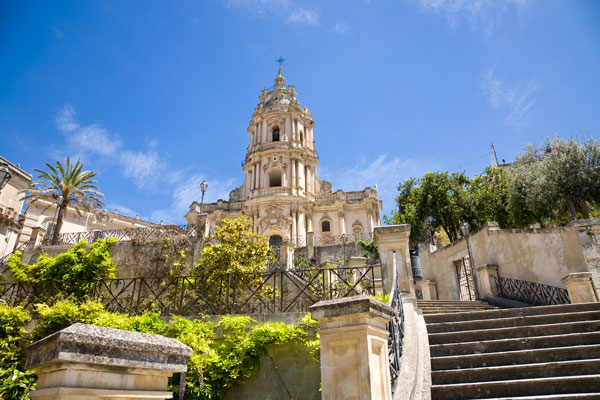
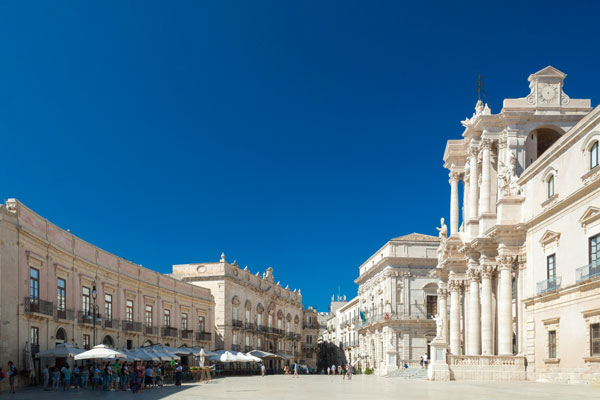
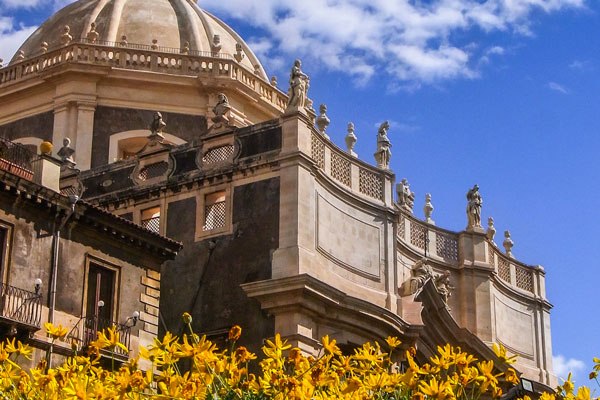
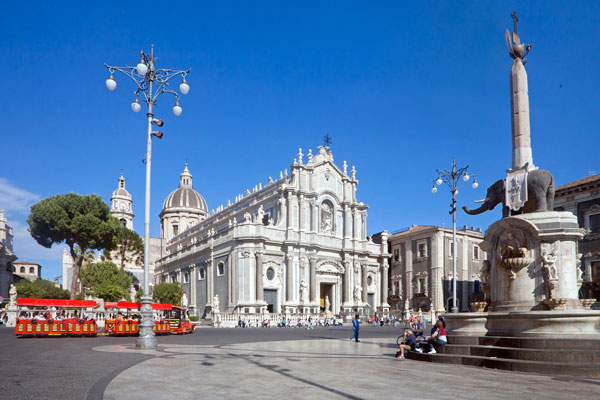
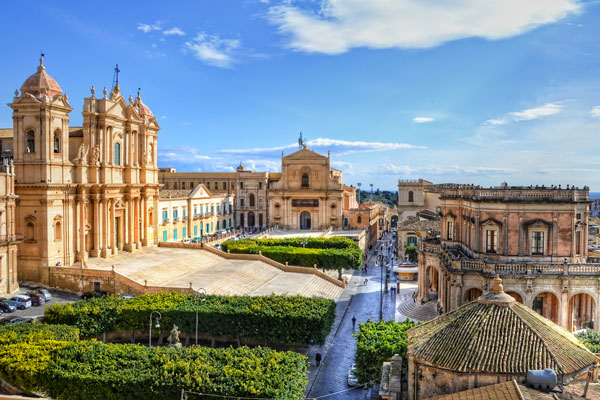
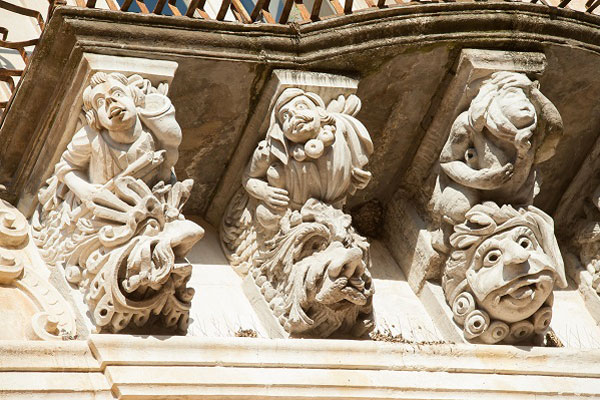
To discover the main sites and monuments of Sicilian Baroque, Uzeda Viaggi suggests you:
Day 1
Catania and Acireale: the Baroque and the “Riviera dei Ciclopi”.
Arrival in Catania in the morning, the town, located at the feet of Mount Etna, was destroyed by the earthquake of 1693 and rebuilt on the basis of a regular plan. Along its straight streets are aligned palaces, churches in Sicilian Baroque style. The architect who projected the new town was G.B. Vaccarini, who had been a Bernini and Borromini’s scholar.
Visit of the Cathedral, built for the first time during the second half of the XI century, rebuilt in 1169 and again after the earthquake in 1693. The façade, composed of two tiers of columns, is one of G.B. Vaccarini’s best works. Close to it, the church of Badia di Santa Agata (St. Agata Abbey), similar to the church of San Carlino in Rome. Piazza Duomo is on the site of the mediaeval Platea Magna but was enlarged after the earthquake of 1693. Via Crociferi is one of the most beautiful and monumental way of the city where are aligned a series of churches and Baroque buildings, notably the church of San Benedetto (St. Benedict), the church of San Giuliano (St. Julian)and the former Collegio Gesuitico. Via Etnea, the High street , is rich of churches, squares, baroque and nineteenth-century buildings.
In the afternoon transfer to Acireale, founded by the Greek according the mythological tale of Aci and Galatea, is famous for its Sicilian Baroque buildings. Visit the Duomo, the main square, the Town Hall and the church of San Pietro e Paolo (St. Peter and Paul); the basilica of San Sebastiano (St. Sebastian) with its astonishing Baroque façade
Dinner and night in hotel in Acireale.
Day 2
Messina e Bagheria: Caravaggio e la Villa dei Mostri
Breakfast in hotel and departure to Messina, the city aligned on the Strait. Visit of the Regional Museum where you can admire the polyptych of San Gregorio (St. Gregory) by Antonello da Messina and two dramatic paintings by Caravaggio: the Resurrections of Saint Lazarus and the Shepherds’ Adoration.
In the afternoon, driving along the scenic Tyrrhenian Coast, you will reach Bagheria, famous for its Baroque and Neoclassical villas. Visit of Villa Palagonia, known as Villa of Monsters for the profusion of grotesque and burlesque statues conceived by the raving fantasy of the old owner.
Night in hotel in Palermo.
Day 3
Palermo, the Regional Capital and The Leopard’s city
Breakfast in hotel and tour of Palermo, extraordinary town of art with monuments of all epoch. In the morning visit the church of Jesus, amazing for the decoration with variegated marbles and tramischi; the Oratorio del Rosario, famous for the Madonna del Rosario painted by Van Dyck, for the paintings of the school of Pietro Novelli and Giacomo Serpottas’s stuccoes.
In the afternoon walking through the Mercato del Capo, one of the most popular historic markets of the town. Visit of Palazzo Mirto with its sumptuous halls and the fountain Rocaille. Alternatively, on request and group booking, it is possible to visit Palazzo Gangi, immortalized by the ballroom scene of “The Leopard”, film directed by Luchino Visconti in 1963. The Princess Carine Calvello Mantegna will open the doors of the palatial residence, where you can still feel the atmosphere of bygone days.
Night in hotel
Day 4
The passion of Trapani and Mazara del Vallo
Breakfast in hotel and departure to Trapani, attractive Punic-Roman city. Along Via Vittorio Emanuele visit of the church of Collegio dei Gesuiti by Natale Masuccio, St. Lawrence Cathedral and see the polychrome statues that represent scenes from the Passion of Jesus Christ in the church of the Purgatory.
In the afternoon tour of Mazara del Vallo, the town emporium of the Arab time, the Duomo and the Loggia Manierista, fine example of Sicilian Baroque scenography. In the church of Santo Egidio (St. Giles), recently transformed in a museum, there is one of the most extraordinary archaeological finding of the Greek art: the Dancing Satyr, found deep in the sea by a fish man in 1998. Drunk and in trance, this bronze statue reproduces a Prassitele’s one, example of Mannerism Alexandrine Baroque.
Night in hotel.
Day 5
Donnafugata Castle and Ragusa Ibla
Breakfast in hotel and transfert to the District of Ragusa for a full immersion in the Ibleian Sicilian Baroque created after the destruction the earthquake of 1693. This Ibleian Baroque District together with Catania and Noto today is a UNESCO World Heritage Site. These places are also the settings of “Commissario Montalbano” by A. Camilleri.
Visit of the Castle of Donnafugata, magnificent aristocratic residence of the late nineteenth century: three floors and more than one hundred and twenty rooms. It covers an area of about 2,500 sq meters and shows a wide façade in Neogotic style, crowned with two lateral towers and a labyrinth built with local white dry-stone walls in the park guarded at the entrance by a stone soldier.
In the afternoon tour of the picturesque and charming Ragusa Ibla: Palazzo Cosentini and Palazzo La Rocca with the grotesque stone figures under the balconies and, last but not least, the wonderful church of San Giorgio (St. George) with its high façade-tower brilliant creation of Rosario Gagliardi.
Night in hotel in Ragusa.
Day 6
Modica
Breakfast in hotel. Tour of the splendid city of Modica, celebrated for the theatricality of its urban plan and its scenographic steircases like the one leading to the spectacular church of San Giorgio. Visit of the Baroque cathedral of San Pietro (St. Peter).
Tour of Scicli where you will see the Duomo entitled to San Giovanni (St. John) with the Madonna delle Milizie (Madonna of the Militias), Santa Maria La Nuova, San Bartolomeo (St. Bartholomew) with the Neapolitan crib, Palazzo Beneventano with its sculptured brackets under the balconies.
Transfer to Noto. Dinner and night in hotel.
Day 7
The giardino di pietra (garden in stone) of Noto and Syracuse.
Breakfast in hotel. In the morning tour of the beautiful town of Noto, known as the “garden in stone”, rebuilt after the earthquake of 1963. You will admire the scenographic perspective of its flights of stairs, the cathedral, the churches of San Francesco (St. Francis), of San Carlo (St. Charles) and the Baroque church of San Domenico (St. Dominique), Rosario Gagliardi’s masterpiece, and then the grotesque masks under the balconies of Palazzo Nicolaci di Villa Dorata.
Transfer to Syracuse, famous city of the Greek period. Tour of Ortigia: Piazza del Duomo (Duomo Square) with its Sicilian Baroque façadeof the Cathedral, which includes a Greek temple of the fifth century B.C. dedicated to Athena. In the near church Badia of Santa Lucia there is one of Caravaggio’s dramatic work: il Seppellimento di Santa Lucia (the Burial of St. Lucia).
In the afternoon transfer to Catania airport and departure





